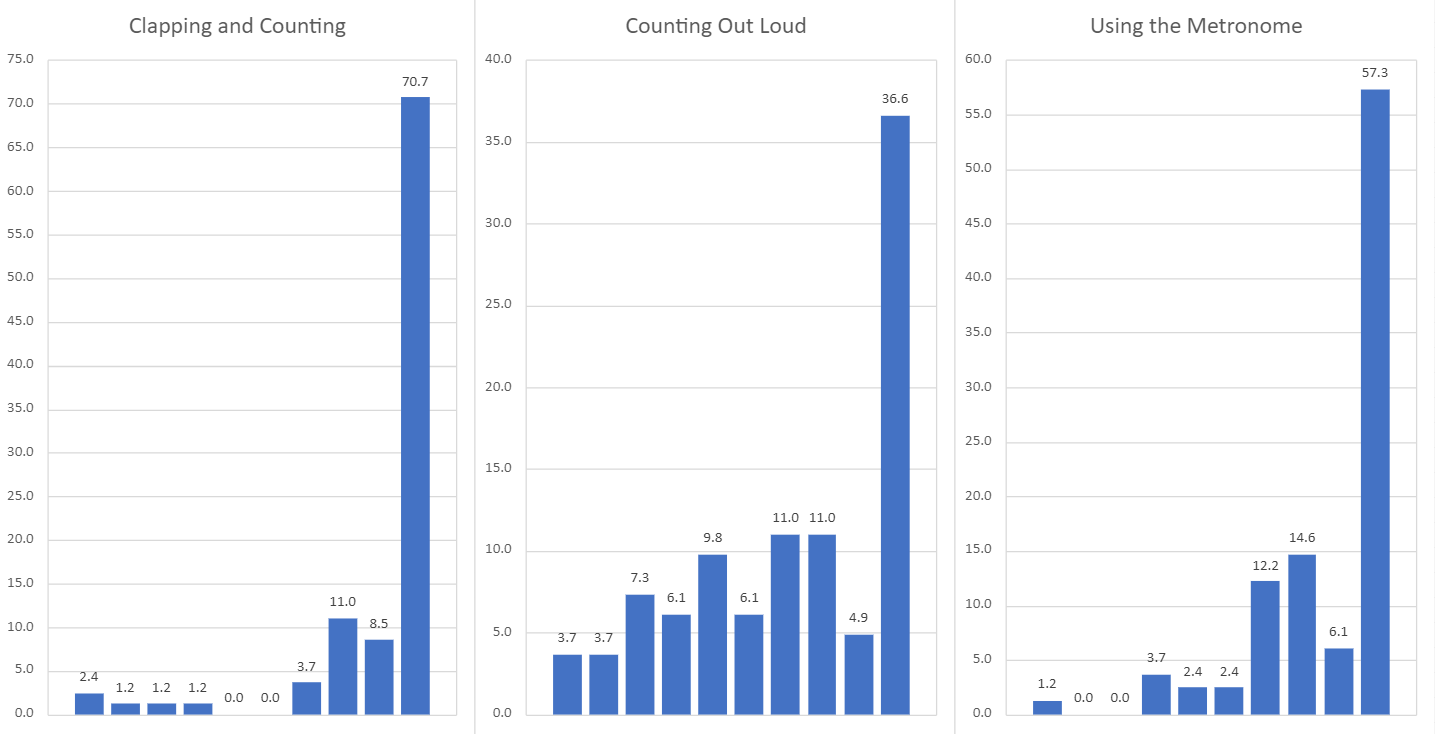Survey Results: Teaching Rhythm
Topic: Participants were asked to rank the importance of a few common teaching techniques for helping students to learn rhythm:
Counting out loud while playing
Using the metronome
Clapping & counting
Results:
1/3 of responses ranked counting out loud while playing critically important. Some remarked that wind players, vocalists, and even violinists are incapable of counting out loud while playing.
Over 50% of responses ranked using the metronome as critically important. Some teachers commented that this is not valuable unless done correctly (and that it’s often not done correctly).
75% of responses ranked clapping and counting as critically important.
Analysis:
Students who utilize these techniques will improve their knowledge of rhythm. Singers and wind players can sing their melodies with the counts, while violinists and violists can say the counts while keeping their jaw closed so it doesn’t interfere with their position. Students who struggle to stay with the metronome can first just clap with it at various tempos, to get used to following an external source. Using the metronome helps us to keep a steady rhythm and to listen to others. Counting out loud while playing creates rhythmic leaders!
Let Core Music Theory help you become a rhythmic leader!
Respondents rated the importance of the above teaching techniques on a scale of 1-10. Results are listed as a percentage.
String teachers had some fantastic feedback!
“I find that the best way to teach rhythm is to have my students play along with a recording of the tune. That way they have an audio reference to connect to the printed part.” —Mimi Rabson, Berklee College of Music
“I use drum loops on headphones or something that is louder than the violin. I use drum loops because they can be changed to give the musician something that's solid, interesting and fun to play against, rather than just a simple click” —Vi Wickam, Loveland, CO
“My Rhythm Workshop workbook includes 24 rhythm duets, addressing every rhythm challenge in every time signature that most players will ever encounter, and it is fun to do! See information and introductory videos for The Chaffee Core Musicianship Project at clarkchaffee.com” —Clark Chaffee, Sun City West, AZ

